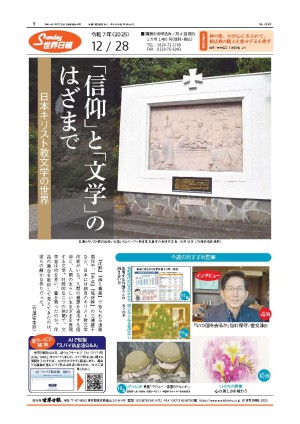銅像撤去運動を「現代の傲慢」と非難する彫刻家 MODERN ARROGANCE:Sculptor says statue removal advocates need reality check
何と傲慢(ごうまん)なことか。
現代のモラルに合わないと判断された人々の記念像を撤去しようとする新たな運動が広がっているが、カナダ・オンタリオ州を拠点に活動する彫刻家のティモシー・シュマルツさんにとって、この運動を表す言葉はこれしか見つからない。
米国では南北戦争の南軍指導者像が引き倒され、カナダでは先住民への残忍な扱いに関わった首相像が破壊されたことについて、シュマルツさんは、単に意見が異なるという問題にとどまらないと語った。自分たちの方がもっと賢く、自分たちなら違う行動を取っていた、と言っているのだ。
それこそ思い上がりだ。
シュマルツさんは、ワシントン・タイムズ紙の取材に「南軍指導者像を破壊したり、博物館に移したりすることで、見えないように、忘れ去られるようにしている者たちは、こう言っているに等しい。自分たちが彼らの立場だったら、別のことをしていただろうと。これは傲慢だ」と述べた。
これは、現在の時代精神に挑戦する考え方だ。市議会や大学の理事会、ジョージ・フロイドさんの死をきっかけに人種的不平等に激怒したデモ隊ら、あらゆる人々によって銅像が引き倒されている。黒人男性のフロイドさんは、5月にミネアポリス市警の留置場で死亡した。
いずれの記念碑も歴史と記念であり、建立した世代とそれを残してきたその後の世代を象徴するものだ。
だが、シュマルツさんは、銅像撤去運動が見せつける確信について、事実確認を行う価値があると主張する。
約1400年前に崖の表面に掘られた2体の巨大な「バーミヤン大仏」をタリバンが破壊したことに対し、世界から非難が起きたのは、ほんの20年前のことだ。タリバンの技師たちは、大仏を「偶像」と断じた最高指導者オマル師の指示で洞窟に穴を掘り、ダイナマイトで爆破して瓦礫(がれき)にしたのだ。
「われわれがしているのは同じことだ」。シュマルツさんは語った。「存在を消し去りたいだけだ」
銅像撤去運動はこの数カ月で盛り上がり、一般世論の支持も大きく広がっている。
2017年8月にバージニア州シャーロッツビルでロバート・リー将軍像をめぐって衝突が発生したが、ほんの数年前は、ほとんどの米国民が銅像撤去を望んでいないことが世論調査で示されていた。今年夏の世論調査ではそれが劇的に変わり、一部の調査では南軍指導者像を公共の場から撤去することに賛成する人が過半数を占めた。奴隷を所有していた建国者たちを拒絶する人も増えている。
これはシュマルツさんが恐れていた、下り坂を転げ落ちるような状況だ。
「奴隷によって建設されたという理由で、(ローマの円形闘技場遺跡)コロッセオも解体するというのか」。シュマルツさんは首をかしげた。
シュマルツさんはキリスト教徒の芸術家であることを公言し、バチカンに作品が置かれている。その姉妹作の銅像は近く、ワシントンDCのカトリック大学キャンパスにある「無原罪の御宿りの聖母教会」付近に設置されることになっている。
問題は、これまでの世代があまりに多くの像を建てたことではなく、現在の世代が建てた像、特に本当に意味のある像があまりに少ないことだ。シュマルツさんを苛(いら)立たせるのは、ハンバーガーやスプーン、幾何学模様、視覚的ジョークの彫像だ。これらは21世紀初期の感性について、次世代に「ゆがんだ考え方」を伝えることになると、シュマルツさんは語った。
(12月29日付)
Absolutely arrogant.
For Timothy P. Schmalz, an Ontario-based sculptor, that’s really the only way to describe the renewed push to tear down statues that commemorate people who are now deemed out of step with modern morals.
When a Confederate figure gets toppled in the U.S., or a prime minister who was part of brutal treatment of Indigenous people is destroyed in Canada, it says more than just disagreeing, Mr. Schmalz said. It’s a claim that we would have known better, acted otherwise.
And that’s the hubris.
“When one destroys or puts a Confederate statue in a museum, out of sight, out of mind, what they’re suggesting is if we were in their place we would have done something different. And that’s their arrogance,” he told The Washington Times.
It’s a notion that challenges the current zeitgeist, where statues are being taken down by everyone including city councils, university boards and mobs of demonstrators fired up over racial injustice in the wake of George Floyd’s death. Floyd, a Black man, died while in Minneapolis police custody last May.
Each monument is both history and memory, saying something about the generation that erected it and about the ensuing generations that allowed it to stand.
But Mr. Schmalz says it’s worth taking a reality check on the certainty the tear-down movement displays.
It was only two decades ago that the world rose in condemnation of the Taliban for destruction of the Bamiyan Buddhas, two massive sculptures carved into a cliff face some 1,400 years ago. Taliban engineers bored holes into the carvings and set dynamite to blast them to rubble on the orders of Mullah Omar, who declared them “false idols.”
“We’re doing the same thing,” Mr. Schmalz said. “What’s it’s doing is creating blind spots.”
The tear-down movement has been rising in recent months, gaining significant ground in public opinion.
Just a few years ago, surrounding the Charlottesville, Virginia, clashes over a Robert E. Lee statue in August 2017, polling showed most Americans didn’t want to see the statues come down. This summer, polling was decidedly more mixed, with some surveys showing a majority now in favor of ousting Confederate figures from public spaces. A growing number also are willing to nix slaveholding founders of the nation.
For Mr. Schmalz, that’s just the kind of slippery slope he worries about.
“Are we going to go and dismantle the Colosseum because it was built by slaves?” he wondered.
Mr. Schmalz is an avowedly Christian artist who has had a piece placed in the Vatican and soon will install a companion sculpture near the Basilica of the National Shrine of the Immaculate Conception on the campus of Catholic University in the District of Columbia.
The problem isn’t too many statues put up by previous generations ― but rather the current generation has put up too few, or at least too few that have any real meaning. He bristles at sculptures of hamburgers, spoons, geometric designs and visual puns, which he said will give future generations a “distorted idea” of early 21st century sensibilities.
December 29, 2020





